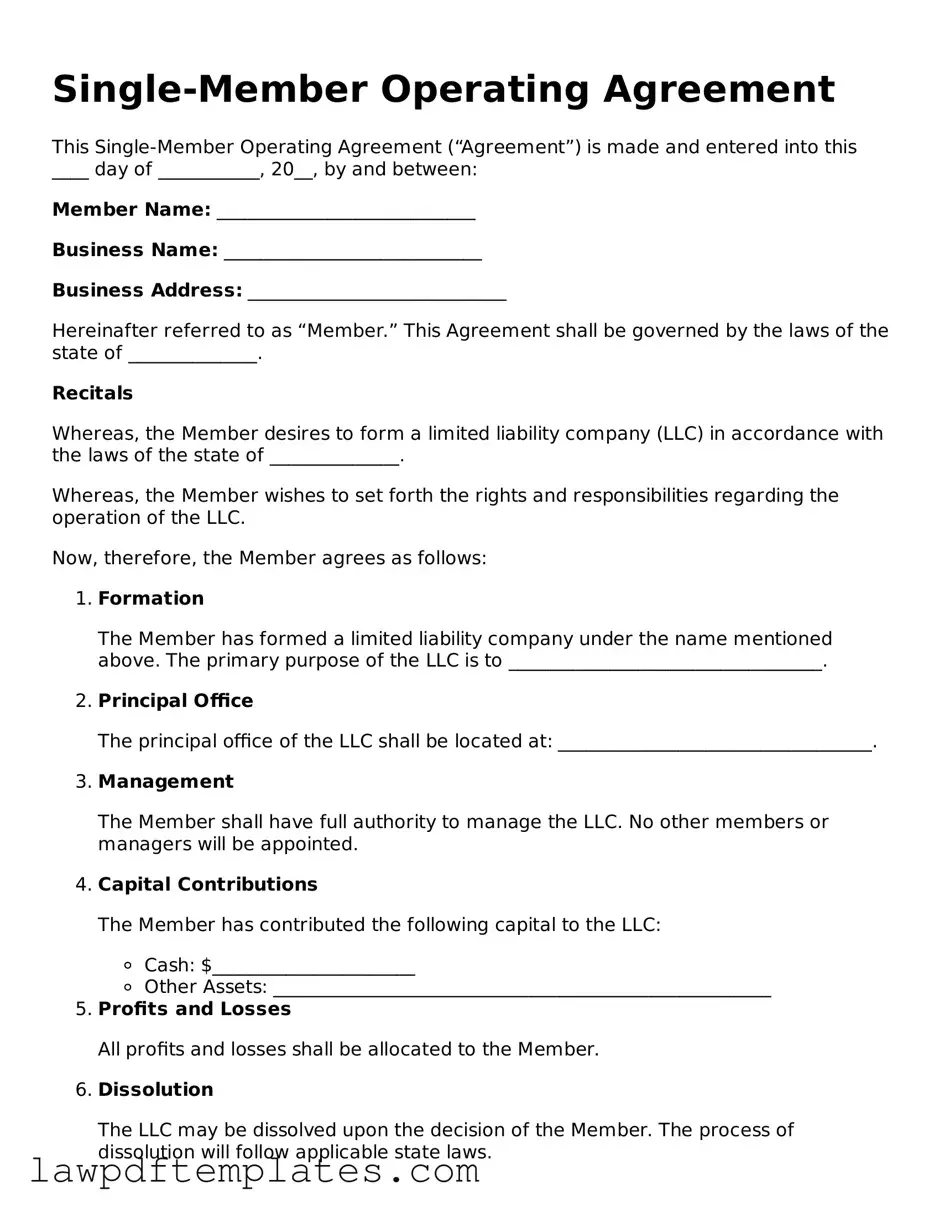Single-Member Operating Agreement
This Single-Member Operating Agreement (“Agreement”) is made and entered into this ____ day of ___________, 20__, by and between:
Member Name: ____________________________
Business Name: ____________________________
Business Address: ____________________________
Hereinafter referred to as “Member.” This Agreement shall be governed by the laws of the state of ______________.
Recitals
Whereas, the Member desires to form a limited liability company (LLC) in accordance with the laws of the state of ______________.
Whereas, the Member wishes to set forth the rights and responsibilities regarding the operation of the LLC.
Now, therefore, the Member agrees as follows:
- Formation
The Member has formed a limited liability company under the name mentioned above. The primary purpose of the LLC is to __________________________________.
- Principal Office
The principal office of the LLC shall be located at: __________________________________.
- Management
The Member shall have full authority to manage the LLC. No other members or managers will be appointed.
- Capital Contributions
The Member has contributed the following capital to the LLC:
- Cash: $______________________
- Other Assets: ______________________________________________________
- Profits and Losses
All profits and losses shall be allocated to the Member.
- Dissolution
The LLC may be dissolved upon the decision of the Member. The process of dissolution will follow applicable state laws.
- Amendments
This Agreement may only be amended in writing, signed by the Member.
- Governing Law
This Agreement shall be governed by the laws of the state of ______________.
In witness whereof, the Member has signed this Single-Member Operating Agreement as of the date first written above.
Member Signature: ____________________________
Date: ____________________________
